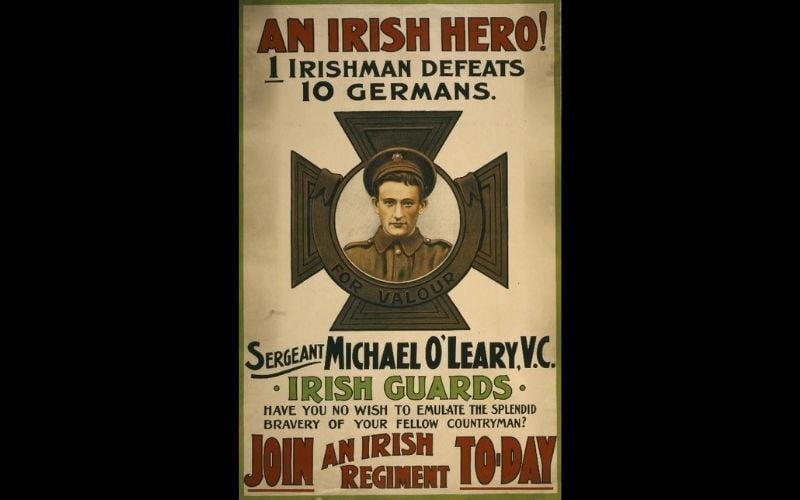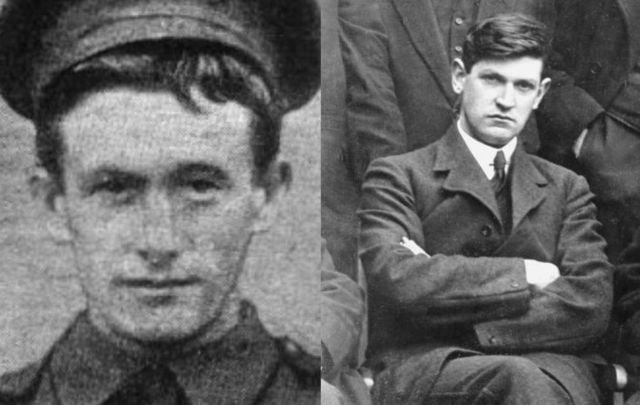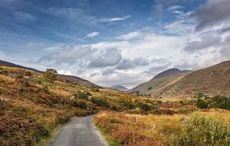It’s the autumn of 1890 and in a small farmhouse in West Cork, an Irish hero named Michael is born. No doubt you’re thinking that this boy's surname is Collins but in fact, his name is O’Leary.
Michael O’Leary is a different type of Irish hero; he became a hero of the Great War. The two Michaels born within a close timeframe of each other would follow the same path to a certain point before diverging quite significantly. These two men highlight the complexity of this era showing two different aspects of Ireland during the revolutionary period.
Born in Inchigeela in late September 1890, O’Leary is the older of the two Michael’s by just three weeks - Collins was born on October 16, 1890, in Woodfield near Clonakilty. Both men came from rural farming backgrounds. Both their fathers came from strong nationalist backgrounds with both active in the struggle in their own ways.
As they grew into adulthood, both men appeared to be heading down a similar path. Life on the land was not really an option for either. Both went looking for careers as part of the British Empire, O’Leary as a policeman, and Collins as a civil servant.
O’Leary joined the Navy, but left due to health issues and then joined the Irish Guards Regiment before moving to Canada to become a policeman. In 1913, he took part in the heroic act of stopping two criminals during a two-hour gun battle.
At the same time, Collins was well established in the heart of the Empire. He moved to London in 1906 and became a clerk in the London Post Savings Bank. By 1913, he was working for stockbrokers Horne and Company. Collins was also a leading member of the GAA in London and was sworn into the IRB by fellow Cork man Sam Maguire. The two Michael’s were now taking very diverging paths.
When the Great War commenced, O’Leary was keen to do his part for the war effort. He left Canada and returned to Ireland to rejoin the Irish Guards. Thousands of Irish men signed up to join the Army heeding the call of Home Rule leader John Redmond. There was strong support for the war effort in Ireland.
Collins wasn’t interested in fighting this war. His mind was thinking of the adage – “England’s difficulty is Ireland’s opportunity.” As conscription in England was about to be introduced, Collins found his way to Dublin in early 1916. By then, Collins would be well aware of who O’Leary was as he had become a national hero.

Love Irish history? Share your favorite stories with other history buffs in the IrishCentral History Facebook group.
Cuinchy, northern France on the 1st of February 1915. The Irish Guards are ordered to prepare an attack on recently gained German positions. Heavy fire from the Germans position made the attack difficult. Fearless O’Leary singlehandedly killed eight German soldiers, taking another two as prisoners while recapturing the position. This incredible feat of bravery saw him awarded the Victoria Cross, the highest military honour achievable in the British Army. He was one of 37 Irishmen to be awarded the VC in the Great War, but O’Leary became by far the most famous. The honour was presented to him by King George V.
O’Leary returned to Cork to a hero’s welcome, thousands thronged the streets of the city to catch a glimpse of him while hundreds of thousands of people came to see him in London. O’Leary’s actions really caught the public's attention. In the press there was glowing praise, people like Arthur Conan Doyle heaped admiration on him, songs and plays were written about him.
O’Leary, with his rural Irish background, became the poster boy for the recruitment drive. As the carnage of the war became known to the public, the number of men signing up began to fall. Across Ireland and the UK, O’Leary was used in the propaganda machine to motivate young men to sign up and become a hero just like him. This media attention and the need to recruit men may in part explain why O’Leary became more prominent than other VC recipients.

A poster using Michael O'Leary's picture. (Public Domain)
O’Leary was not a man who wanted the adulation and attention; he didn’t like to speak about his actions. He was a soldier who wanted to see action and in January 1917 he returned to war with the Connaught Rangers, this time in the Balkans.
Just over seven months earlier, Collins played a minor role in the Easter Rising as aide-de-camp to Joseph Plunkett. When the rebels surrendered and were marched through the streets of Dublin, they were booed and treated with disdain by the locals, many of whom had members of their family fighting at the front. With the executions of the Rising leaders, there was a sudden shift in the political atmosphere in Ireland. The disdain was now for men like O’Leary, soldiers who were previously heroes were now outcasts. Men like Collins became the heroes.
While O’Leary was recruiting Irish men to join the Great War, Collins was busy recruiting men to his way of thinking – guerrilla war. Collins was interned in Frongoch after the Rising and here he started his rise. He became a leader in the camp and after release, Collins continued his ascent. He spoke at Thomas Ashe’s funeral in 1917 and became more and more prominent in the nationalist movement.
In the post-war general election of 1918, Collins was easily elected to the West Cork seat for Sinn Fein as they claimed the majority of seats in Ireland overtaking the Irish Parliamentary Party. Ireland had changed irrevocably.
January 1919 marked the official start of the War of Independence, but incidents had been occurring before this date around the country including an incident outside Ballyvourney, West Cork in July 1918 which was the first shooting incident targeting the RIC.
In the same month that the war officially started, O’Leary married Ballyvourney woman Gretta Hegarty in the local church. O’Leary’s home area of West Cork became a key battleground in the fight for freedom and among those leading the fight nationally was his fellow West Cork man Michael Collins.
For his part, O’Leary, disillusioned with British action in his home country, resigned from the British Army in 1920 and returned to Canada in February 1921 in the hope of finding employment, which was difficult to find in Ireland especially for ex British soldiers.
By then, the elusive Collins – as the British press saw him - was desperately leading the intelligence war against the British Army. At the time O’Leary was leaving Ireland it appeared the British were getting the upper hand in the War of Independence. Shortly after he left, events such as the Battle of Crossbarry involving the West Cork flying column helped swing the war back towards the Irish with the British acknowledging that the war needed to be brought to an end.
In December 1921, Collins signs the Treaty which he saw as a stepping stone to freedom. Back in Canada, O’Leary struggled, like many ex-servicemen, to find a job, but in 1923 he was working as a police sergeant for a railway. Ireland would still be mourning the loss of Collins, killed in August 1922 in West Cork.
While we can only speculate on Collins's life if he had lived, we do know that O’Leary lived to be 70, dying in 1961. In between, his life fluctuated. He was embroiled in two scandals in Canada, one for bootlegging and the other for smuggling an illegal immigrant. He was found innocent in both cases. Working in law enforcement during the Prohibition era was difficult and perhaps he was too effective, unwilling to turn a blind eye and it appears he was set up in attempts to discredit him.
Unfortunately, the media attention never left O'Leary and the press continued to follow him throughout his life reporting on his every move. He later returned to London with his wife and five children and worked various jobs such as making poppies and as a hotel porter at the Mayfair hotel.
Even though he was a sickly man having never fully recovered from malaria during the Great War, he still did his duty during World War II along with his four sons, two of whom distinguished themselves in the RAF. In 1954, he was impersonated by a man called Thomas Meagher at a Victoria Cross gathering.
At O'Leary's funeral, the Irish Guards formed a Guard of Honour and his medals are displayed at their Headquarters at Wellington Barracks, London. In 2015, one hundred years since his brave act on the battlefield, O’Leary was remembered with a plaque in Glasnevin cemetery, sharing the graveyard is the final resting place of Michael Collins.
These two men were both Irish, both West Cork men from proud nationalist backgrounds. Their lives tell juxtaposing stories, different shades of green. Now, 130 years since they were born, we can hopefully reconcile and respect all the different aspects of Irish history from this era.
*Samuel Kingston is a freelance TV producer, writer, and local historian from Clonakilty, West Cork.
*Originally published in 2020. Updated in Nov 2023.




Comments